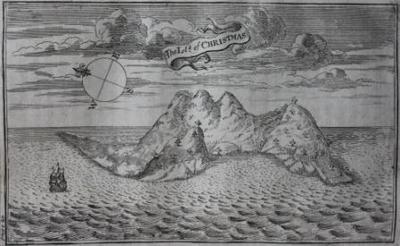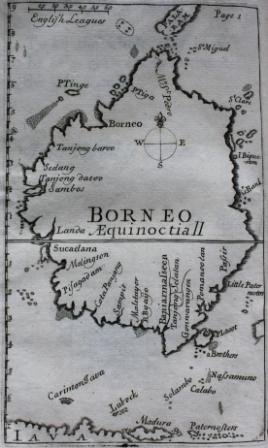Christmas Island
On hearing there is a place called Christmas Island, one expects to hear about a snowy beautiful ice island with reindeer, sleigh rides, and ice skating with hot chocolate waiting indoors by a warm fire. There are in fact five Christmas Islands, only one of which is cold and snowy in Nova Scotia. The Nova Scotia Christmas Island has a small community of Scottish descent and is a postal hub at Christmas in order for items to be stamped from Christmas Island. Two other Christmas Islands are small uninhabited islands off the coast of Tasmania and another is part of the Kiribati Island group in the Pacific Ocean. This island is often referred to as Kiritimati and was a test ground for nuclear testing in the 1950s and 1960s. The most commonly referred to Christmas Island is a beautiful tropical island in the Indian Ocean near Indonesia. It lies just over ten degrees south of the equator and enjoys a warm 27-30 degrees Celsius all year round. It has sandy beaches, tropical rain-forests and interesting flora, bird and aquatic lifeforms. It was uninhabited until the nineteenth century. The Edward Worth Library however contains a book published in 1718 that describes a voyage to Borneo and includes a drawing and one of the earliest descriptions of this tropical Christmas Island in the Indian Ocean.

Daniel Beekman was charged with commanding an expedition to Borneo to attempt to re-establish a trading relationship with the peoples of Borneo after an East-India Company factory on the island was torn down by locals and many of the Englishmen executed. En route to Borneo Beekman described the Canary Islands, Cape Verde Islands and closer to Borneo he described his passage past Christmas Island and forty-two day stop at Java. Beekman explained that Christmas Island was so called as it was first discovered by explorers on that day. He calculated it to be of a latitude 10 degrees 31 Min. south of the equator (current calculations place it at -10.44 degrees)and 4680 miles east from the Cape of Good Hope. Beekman was unable to anchor at the island but remarked, “This island looks exceedingly pleasant, being covered with lofty trees.” He went on to describe the shape of the island and directions to it before moving on to describe his stop at Java. The island was first sighted by a European in 1643 on Christmas Day by an East India Company ship Royal Mary captained by William Mynors. It was also mapped by Dutch explorer Pieter Goos in 1666 and visited by William Dampier in 1688. The Edward Worth Library possesses one volume of William Dampier’s multi-volumed voyage around the world and a volume by Phillip Cluveri containing reproductions of some of Pieter Goo’s maps but unfortunately neither of these contain the descriptions of Christmas Island.

Beekman did not alight at Christmas Island but William Dampier who recorded his passing of it in 1688 sent two canoes ashore for a few hours. The canoes returned with wood for repairs, birds and crabs to eat. He recorded its geographical features as being an island “of good height, with steep cliffs against the South and Southwest, and a sandy bay on the North side but with very deep water steep to the shore.” Beekman’s description was slightly more technical, “Coming from the N. Westward it appears pretty high, with a saddle in the Middle; the Westernmost Land is the highest, trenching away to the Northward to a low flat point; the Easternmost Point is low, but bluff. I founded within eight miles of the low Point, but had no Ground, tho’ with 100 Fathom of Line out: The Island is about 7 Leagues from east to west.” The accompanying sketch is said to have exaggerated the height of the island and Beekman’s description of its length is overestimated by about seven or eight miles. However these first two descriptions of the island are the most accurate until the nineteenth century. One of the primary obstacles to its exploration was the lack of anchorage. Some other passing ships over time described it inaccurately as having coconut and lime trees as well as wild pigs, none of which were found on the island when it was finally explored in the nineteenth century. It’s exploration first in 1857, and then more thoroughly in 1887, 1888, and 1890 by respective British vessels, Flying Fish (as part of the Challenger expedition), H.M.S. Egeria, and H.M.S. Redpole, yielded surveys and collections of flora, fauna and rock samples. The rock samples led to the discovery of rich phosphate supplies on the island from guano deposits. Christmas Island was annexed by Britain at the urging of scientist John Murray who then began to mine the phosphate supplies on the island. This industry at last brought permanent settlers to Christmas Island. Prior to this settlement of the island there were no indigenous inhabitants but a small colony was set up in the late nineteenth century by the Ross family of the Coco and Keeling Islands who, not realising the value of phosphate, believed Murray had discovered gold on the island. Phosphate mining proved very valuable and has continued until the present day. During World War II the Japanese invaded Christmas Island to take control of the phosphate supplies. It was subsequently reclaimed for Britain who then turned it over to the Australian Government in 1957. Christmas Island, as an Australian territory, has been a destination for refugees seeking asylum since the 1980s and has been at the centre of several refugee controversies. It also attracts wildlife conservation researchers and holidaymakers.

This brief encounter with Christmas Island is but a small fraction of Beekman’s voyage to Borneo. In the remainder of the book he outlines the many hostile and friendly interactions with the various groups of residents of Java and Borneo. In the several months Beekman and his crews spent in this region they dined with several of the local Kings, exchanged gifts, attended local weddings, survived many sea storms, traded copious amounts of pepper as well as some gold and diamonds, took fire from hostile groups angered by the behaviour of the previous East India Company men and Beekman foiled two attempted mutinies by some of his own men. Beekman described the lush rain-forests in Borneo and the rich flora and fauna and natural resources.
The country abounds with Pepper, the best Dragons-blood, Bezoar, most excellent Camphire, Pine Apples, Pumblenoses, Citrons, Oranges, Lemons, WaterMelons, Musk Melons, Plantons, Bonano’s, Coconuts, and with sorts of Fruit that is generally found in any Part of the East-Indies. The Mountains yield Diamonds, Gold, Tin, and Iron; the Forests, Honey, Cotton, Deer, Goats, Buffalo and wild Oxen, wild Hogs, small Horses, Bears, Tygers, Elephants, and a multitude of Monkeys.
One of the most colourful accounts in the book is of Beekman’s pet orang-utan:

‘The Monkeys, Apes, and Baboons are of many different Sorts and Shapes; but the most remarkable are those they call Oran-ootans, which in their Language signifies Men of the Woods: These grow up to be six Foot high; they walk upright, have longer Arms than Men, tolerable good Faces…. large Teeth, no Tails nor Hair, but on those Parts where it grows on humane Bodies; they are very nimble footed and mighty strong; they throw great Stones, Sticks, and Billets at those Persons that offend them. The Natives really do believe that these were formerly Men, but Metamorphosed into Beasts for their Blasphemy. They told me many strange Stories of them, too tedious to be inserted here. I bought one out of curiosity for six Spanish Dollars; it lived with me seven months, but then died of a Flux; he was too young to show me many Pranks, therefore I shall only tell you that he was a great Thief, and loved strong Liquors; for if our backs were turned, he would be at the Punch-bowl, and very often would open the brandy case, take out a bottle, drink plentifully, and put it very carefully into its place again. He slept lying along in a humane Posture with one Hand under his Head. He could not swim, but I know not whether he might not be capable of being taught. If at any time I was angry with him, he would sigh, sob, and cry, till he found that I was reconciled to him; and tho’ he was but about twelve Months old when he died, yet he was stronger than any Man in the Ship.’
Beekman’s voyage is filled with wonderful adventurous tales and encounters with strange cultures. He admitted he could have filled many more volumes with some of the tales he heard but he did not wish his work to be filled with unsubstantiated stories of natives such as the “…Bundle of Lies published by the famous Ferdinando Mendez Spinto.” Beekman’s “Design is not either to amuse, or abuse the Publick, or to please such as delight in fabulous Romantik Legends or Stories,” but to provide a useful account for the East India Company and those who would travel that way thereafter.
Sources:
Andrews, Chas. W., ‘A Description of Christmas Island (Indian Ocean)’ in The Geographical Journal,Vol. 13, No.1 (Jan., 1899), pp.17-35.
Burstyn, Harold. L., ‘Science Pays Off: Sir John Murray and the Christmas Island Phosphate Industry, 1886-1914’ in Social Studies of Science, Vol 5, No.1 (Feb., 1975), pp.5-34.
Wharton, W.J.L., ‘Account of Christmas Island, Indian Ocean’ in Proceedings of the Royal Geographical Society and Monthly Record of Geography, New Monthly Series,Vol.10, No.10 (Oct., 1888) pp. 613-624.
Text: by Neasa McGarrigle, B.A. (TCD), M.Sc. (Oxon); Candidate for Ph.D, Trinity College Dublin.